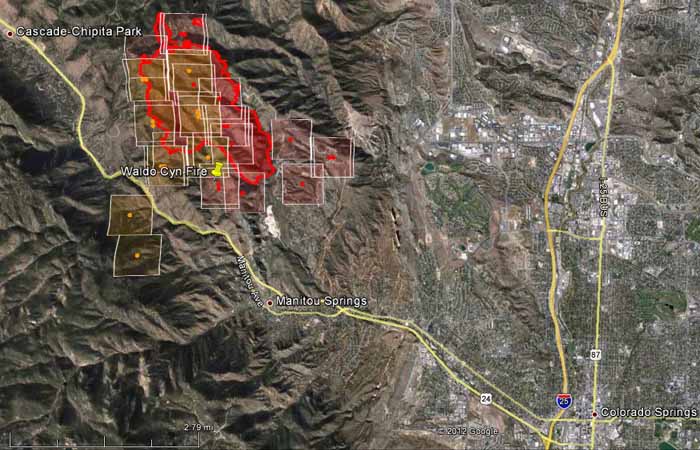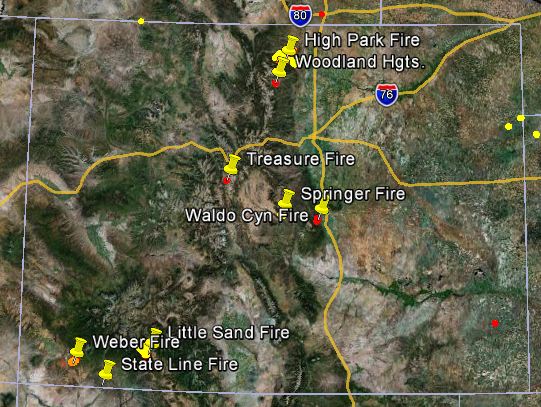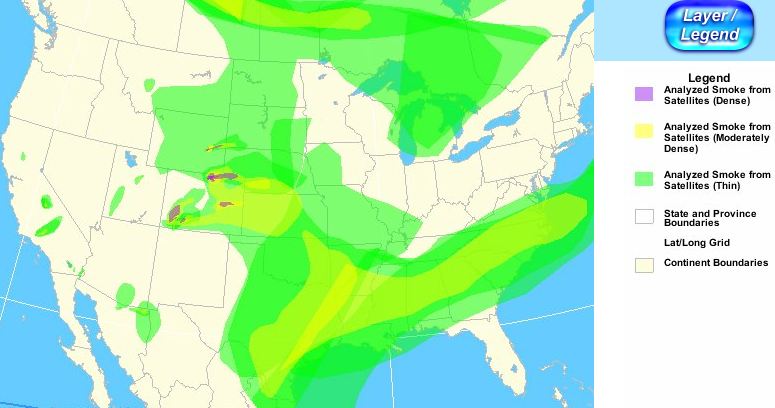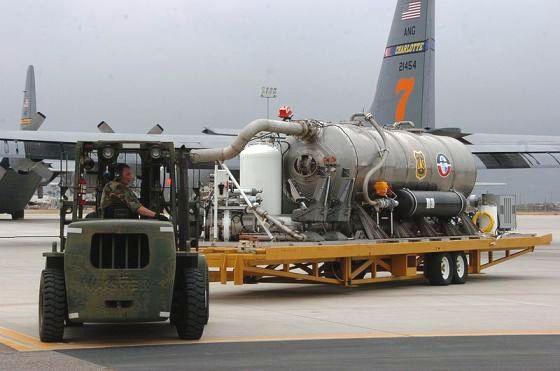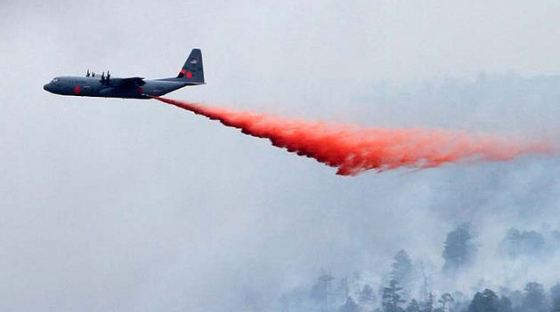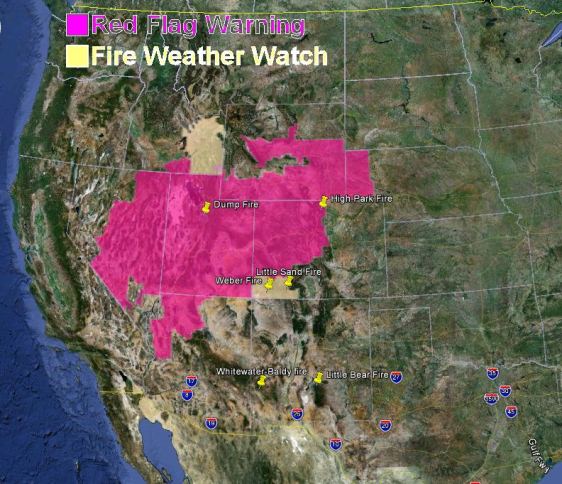The map of the Waldo Canyon fire above shows heat detected by a satellite at 3:35 a.m. June 24.
=====================
UPDATE at 2:35 p.m. MT, June 24:
The map below shows information about the fire’s location from two sources. The red line is the product of an infrared mapping flight by an aircraft at 11:07 p.m. June 23. The squares with the dots represent heat detected by a satellite about four hours later at 3:35 a.m. June 24.
===================
UPDATE at 12:52 p.m. MT, June 24
The Denver Post reported at 12:16 p.m. today that:
…Air resources consist of a helicopter with four helicopters on order. Two heavy air tankers and additional resources are on the way.
Surely this can’t be correct, that there is only one helicopter and no air tankers working on the fire.
===================
UPDATE at 10:32 a.m. June 24:
We have confirmed that two Modular Airborne FireFighting Systems (MAFFS) C-130 air tankers have been activated. Jennifer Jones, a spokesperson for the U.S. Forest Service, told us that the agency requested that the aircraft be in place between noon and 6 p.m. MT on Monday. This is the first time the MAFFS air tankers have been used this year.
======================
9:16 a.m. MT, June 24, 2012
The Waldo Canyon fire west of Colorado Springs has burned approximately 2,500 acres, according to the City of Colorado Springs in a 6:12 a.m. MT update. That site and InciWeb will provide detailed information about the fire, including evacuation notices. However, the InciWeb web site has been having problems, probably due to a large number of people trying to find information about the fire.
There are no reports of any structures being lost.
The map of the fire we have here shows heat detected by satellites at 3:35 a.m. MT, June 24. It shows the fire being less than two miles from the Kissing Camels golf course and very close to Manitou Springs.
Approximately 1,050 homes have been evacuated. Garden of the Gods Park and Garden of the Gods Visitor Center are closed.
A Type 1 Incident Management Team was ordered within a few hours of the first report of the fire. A Type 1 IMTeam is the largest and most qualified team that manages wildfires and other all-hazard incidents.
We are checking on an unconfirmed report that at least one military Modular Airborne FireFighting Systems (MAFFS) C-130 aircraft has been activated. Two are based at Peterson Air Force Base in Colorado Springs 11 miles from the Waldo Canyon fire. Through yesterday, none of the eight MAFFS around the country had been used on fires this year.
We will post more information about the Waldo Canyon fire later. Check back with us for more details.



